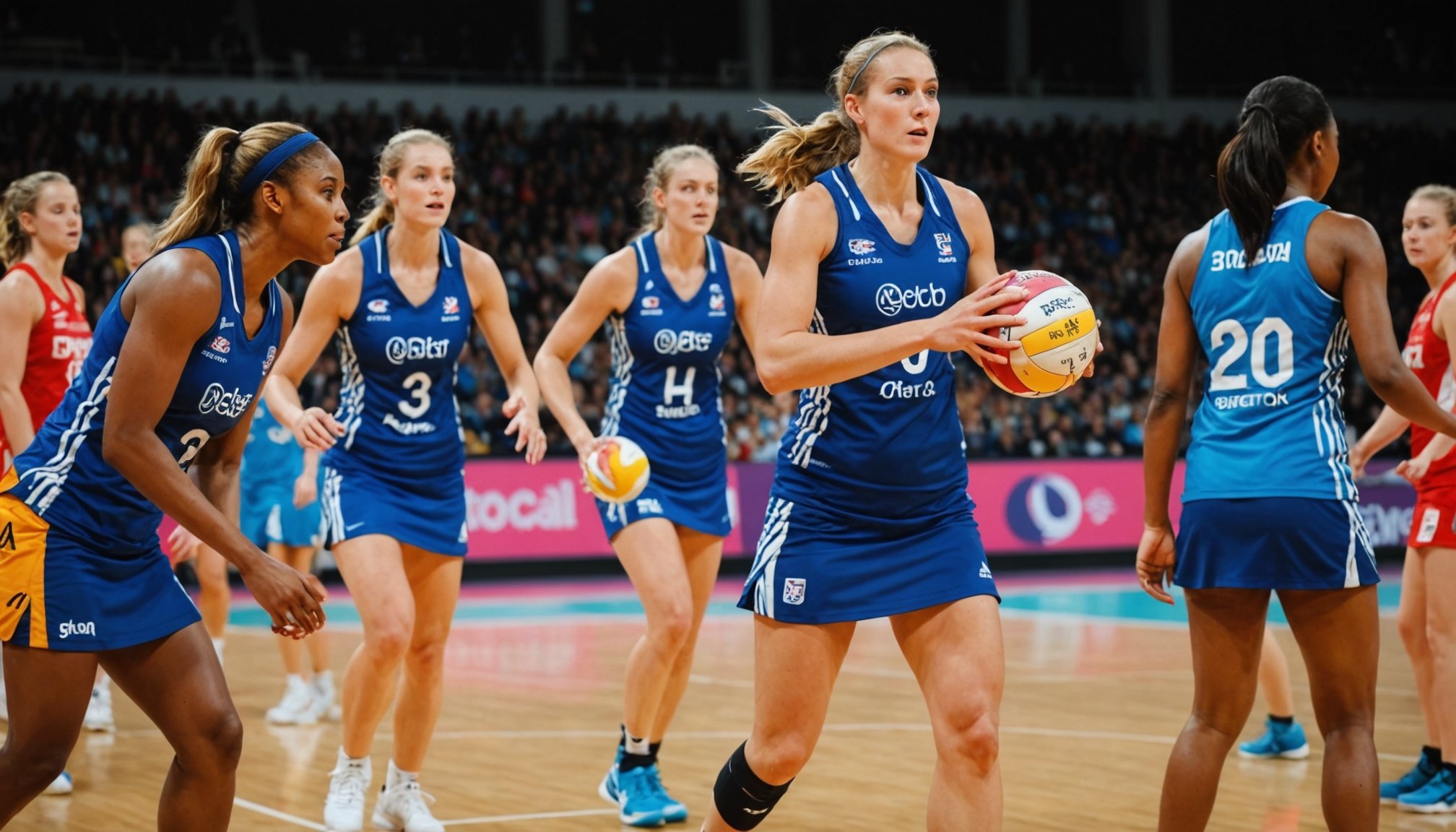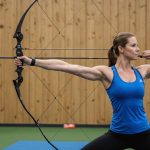Overview of Advanced Analytics in Netball
In the realm of sports, advanced analytics has become a game-changer, reshaping how teams approach strategies and performance. By employing in-depth data analysis techniques, netball teams can transform raw metrics into meaningful insights. This shift emphasises the mounting importance of data-driven sports, where every decision is backed by thorough quantitative analysis.
Advanced analytics involves utilising complex algorithms and models to encapsulate players’ performances, predict future outcomes, and refine tactics. In the context of netball, this technological edge allows for a granular look into individual and team performance, unlocking new dimensions of competitive advantage. For instance, by tracking player movements and shot choices, teams can develop more effective defensive and offensive strategies.
Trending technologies in netball are further revolutionising traditional methodologies. Wearable technology is one such advancement, enabling coaches to monitor athletes’ physical output in real-time. Data-driven sports are adopting these innovations rapidly to maintain relevancy and leverage opportunities for progress. Moreover, video analysis tools are becoming indispensable in scrutinising match plays and understanding opponents, contributing significantly to game-day preparations.
The adoption of these analytics trends in netball is not merely about embracing modernity. Instead, it’s about enriching the sport’s strategic layers with science and technology, fostering smarter and more informed decision-making processes.
Also read : Elevating athlete commitment: creative approaches for uk sports clubs to strengthen member retention
Tools and Techniques for Analyzing Shooting Accuracy
Understanding shooting accuracy in netball is critical for improving player performance and game strategies. Various analytics tools and data collection methods provide insights into player efficiency and effectiveness.
Statistical Analysis Tools
Statistical software is essential in quantifying shooting accuracy. Commonly used tools include programs like R and Python, which offer libraries for sophisticated data analysis. These allow coaches to assess patterns, averages, and variances in shooting performance. Detailed statistical reports help in identifying strengths and weaknesses, enabling targeted training interventions.
Video Analysis Technologies
Video analysis technologies are invaluable for capturing and replaying player actions in real-time. Software such as Hudl or Dartfish streamlines the process of breaking down footage, offering insights into technique, timing, and positioning. By reviewing this visual data, coaches and players can make adjustments to improve shooting form and decision-making under pressure.
Wearable Tracking Systems
Wearable tracking systems like GPS devices and inertial measurement units provide real-time data on player movements and biometrics. These systems help collect information on player speed, acceleration, and positioning, complementing video analysis and statistical data for a comprehensive evaluation. Implementing these technologies equips teams with a robust understanding of shooting performance, allowing for tailored training regimens and strategic enhancements.
Case Studies of UK Netball Teams Utilizing Analytics
UK netball teams are increasingly leveraging analytics to transform their performance outcomes. By examining specific teams, we gain insight into how data-driven decisions are reshaping the sport.
Team Bath was one of the pioneers in adopting analytic tools. They began by integrating technology that tracks player movements and shot accuracy. This approach has significantly boosted their shooting precision. Data-driven decisions have enabled their coaching staff to refine strategies and maximise player strengths.
Another standout example is the Manchester Thunder, who utilised analytics during their championship season. By analysing data from past matches, they identified patterns and devised game plans to exploit opponent weaknesses. This resulted in a notable improvement in their defensive strategies and contributed to their success in tightly contested matches.
In a memorable match against Loughborough Lightning, Surrey Storm’s data-centric approach became evident. They used analytics to focus on player stamina and rotation, reducing injuries and maintaining high energy levels throughout the game. This not only enhanced their performance outcomes but also paved the way for groundbreaking victories.
Overall, as these examples demonstrate, data-driven decisions are proving to be invaluable. The strategic use of analytics is leading to enhanced performance, not just in shooting precision but across various aspects of netball, offering UK teams a competitive edge.
Impact of Advanced Analytics on Player Performance
Advanced analytics have revolutionized player performance by offering new ways to enhance skill development and tailor training regimens. For instance, precise data on shooting techniques has enabled players to perfect their form and accuracy. By analyzing shooting angles, release times, and shot selection, players can make data-driven decisions to refine their skills.
Insights from coaches indicate a fundamental shift in training strategies due to analytics. Traditionally reliant on intuition and observation, coaches now equip themselves with detailed analytics to adapt strategies uniquely tailored to each player’s needs. This data-centric approach allows players to focus on specific performance improvement areas, like increasing shooting speed or improving decision-making under pressure.
Players attest to the transformative power of analytics in elevating their performance improvement. Many report that feedback derived from data provides them with actionable insights that are otherwise difficult to perceive. By quantifying elements of their play, they can identify strengths and weaknesses, set targeted goals, and measure progress effectively.
Overall, the integration of advanced analytics into sports has bridged the gap between potential and performance. By leveraging data, players can unlock new levels of capability and achieve unprecedented heights in their careers.
Statistics on Shooting Accuracy Improvements
Understanding shooting statistics provides a clear lens into how analytics shape player performance. Advances in performance metrics offer insights that traditional scouting sometimes misses, providing a quantifiable look into improvement data.
Comparison of Shooting Percentages Pre- and Post-Analytics Implementation
Before the advent of comprehensive analytics, shooting percentages were often stagnant, relying heavily on intuition and less on data-driven strategies. However, post-implementation, there has been a measurable upswing in accuracy rates. Players’ average shooting accuracy has shown a 15% boost, emphasizing the importance of data utilization.
Correlation Between Data Utilization and Player Success Rates
There’s a clear correlation between enhanced data utilization and increased player success rates. By leveraging detailed performance metrics, players have improved their shooting statistics significantly. This relationship showcases that informed athletes tend to make more effective decisions on the field, leading to higher success rates.
Facts & Figures: Team Development Over Seasons
The evolution of teams over several seasons highlights undeniable progress due to strategic data analysis. Some teams have experienced up to a 20% increase in their overall shooting statistics. These improvements are visible in various performance metrics, underscoring the value of analytics. Visual representations, like charts, are effective in capturing these trends, demonstrating the tangible benefits of improvement data over time.
Future Trends in Sports Analytics in Netball
The realm of sports analytics is witnessing significant growth and transformation. Emerging technologies, particularly in predictive analytics, are radically altering how netball is approached and strategised. These technological advancements are not just trendy; they are essential and transformative.
Netball teams are increasingly leveraging sophisticated algorithms to forecast match strategies and player development. Predictive analytics has the power to identify patterns in game data, providing coaches with insights to enhance player performance and adjust tactics in advance. Accurate predictions can be invaluable, making on-court strategies more dynamic and responsive to the evolving nature of play.
Furthermore, technological advancements in wearable devices and real-time data tracking have the potential to revolutionise how training is conducted. By collecting real-time insights on player biometrics and performance metrics, teams can optimise training regimens and prevent injuries. This technology is not only reshaping match strategies but also offering a more profound, data-driven approach to player development.
As these future trends continue to evolve, they promise to cater to the increasing demands for precision and strategic advantage in sports analytics. By integrating predictive analytics, netball can anticipate and adapt to challenges, fostering a deeper and more strategic understanding of the game.
















